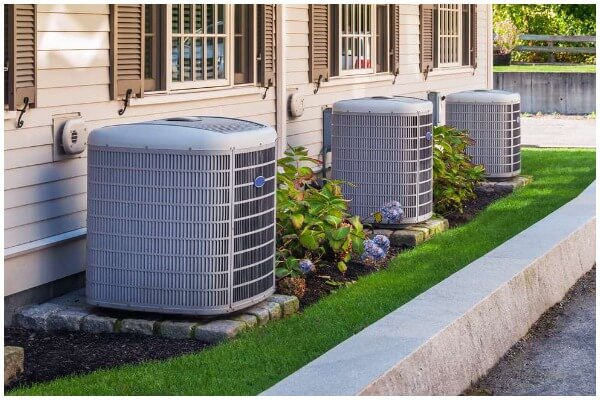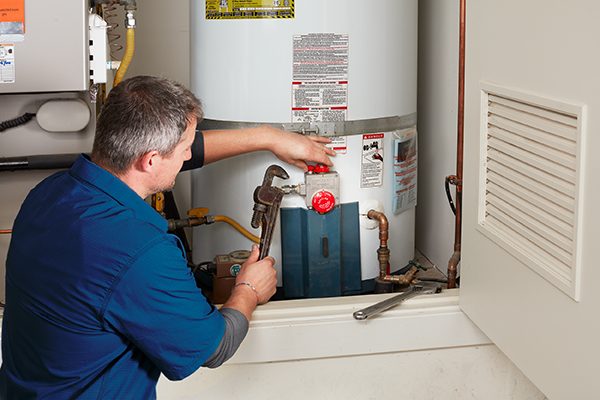Buying and fitting a brand new home heating system is considered a substantial investment akin to buying a new car. Since it will last you over a decade, this is not a decision that needs to be taken lightly. Your budget, requirement, location, and other factors play into the kind of heating system that fits your home the best.
To help you make this decision more efficiently, we’ve created a list of some factors to keep in mind while browsing through your options.

Investment to Benefit Ratio
Even though you may want to opt for a modern solar heating system, you need to take into account your budget, which consists of the initial cost of purchase and installment. We advise you to write down a budget that you can comfortably fit without burning a hole in your pockets.
Usually, propane, natural gas, or oil heating systems work well for a moderate budget while serving you well over 10-20 years if maintained well. We suggest you check out different vendors and get your heating system and fuel supply from the same place for greater discounts. For the same purpose, nelsonpropane.com has some great options and offers to sift through.
Radiant Heating: Cost and Savings
Radiant heating, a system that heats objects and people directly, is an increasingly popular choice for home heating.
The most common type is underfloor heating, which can be powered by electricity, hydronics (heated water), geothermal energy, solar energy, or propane. Costs typically look like such:
Electric Radiant Heated Floors: $19,000 – $36,000
Hydronic Radiant Floor Heat: $6 – $20 per sq. ft.
Geothermal In-Floor Heating Systems: $9,500 – $27,000
Solar Radiant Floor Heating: $8,000 – $19,500
Propane Underfloor Heat System: $2,700 (plus $6 – $20 per sq. ft. for tubing and labor)
(Source: https://www.greenwavedist.com/blog/how-much-does-radiant-floor-heating-cost-2023/)
Another form of radiant heating is radiant heat panels, which can be installed in the walls or ceiling of your home. These panels emit infrared heat directly to the objects and people in the room, providing a comfortable and energy-efficient heating solution.
- Electric radiant panels are typically thin, lightweight, and easy to install, making them ideal for providing supplemental heat to specific areas or rooms.
- Hydronic radiant panels, which are heated by circulating hot water through tubes within the panel, are typically more efficient and suitable for heating larger areas or entire homes, but they are more complex to install.
The cost of radiant heat panels can vary widely depending on the type, size, and number of panels needed, as well as the complexity of the installation. However, they can often be a cost-effective choice for home heating, especially when used in combination with other energy-efficient measures.
While the upfront cost may be higher than traditional heating systems, radiant heating can offer significant long-term savings. It’s more efficient, reducing heating bills by up to 30% according to the U.S. Department of Energy. Maintenance costs are also lower, and the system’s lifespan is typically longer.
Additionally, radiant heating can increase your home’s value, making it a worthwhile investment for many homeowners. Always consult with professionals to ensure the best decision for your specific needs.
Compatibility with Existing Heat Distribution System

When buying a heating system to replace your old one, it’s essential to make sure that it is compatible with the existing distribution system and house type.
For example, if you already own a forced-air system that comes with attached ductwork, it is advised to buy a heating system that will be compatible with the old duct system to waste no reworking costs.
If you want to buy a ductless mini-split system or radiant unit, the distribution system will change and be an inconvenience. When in doubt, speak to the experts and ask them for their two cents about replacement systems.
Also Read: Here’s a Checklist to Prepare Your Home for Winter
Long-Term Fuel Costs
It’s essential to take into account long-term fuel costs while on the lookout for a new heating system. While fuel costs may vary significantly and have other constraints like efficiency and locational feasibility, you need to pay attention to the long-term cost implications of your system.
Make sure you understand the maintenance costs and fuel fluctuations over the lifetime of your new heating system. Also, look into the annual fuel utilization efficiency (AFUE) of each system you scope out since it will tell you more about the units’ fuel efficiency.
Also Read: What Type of HVAC System Is Best for a Tiny House?
Getting Professional Installation
The efficiency, performance, and cost of your new heating system also depend on how well it has been installed. Unfortunately, we have seen several instances of HVAC systems being installed incorrectly by professionals too.
To get the best out of your heating system, have an affordable running bill, and use fuel efficiently, make sure that the installation team size the systems appropriately.
Heating systems that don’t get sized or installed correctly can result in:
- Hot or cold spots due to uneven heating
- Expensive electricity bills
- Frequent on and off cycles
- Sub-standard air quality and humidity problems
- Overheated and overworked systems
- Costly maintenance and repair bills
- Reduced energy efficiency
Wrapping Up:
While maintenance and fuel costs play a big part in deciding which HVAC suits your home best, looking into other factors, as we have mentioned in the blog above, will also assist in buying the most suitable unit for your home.